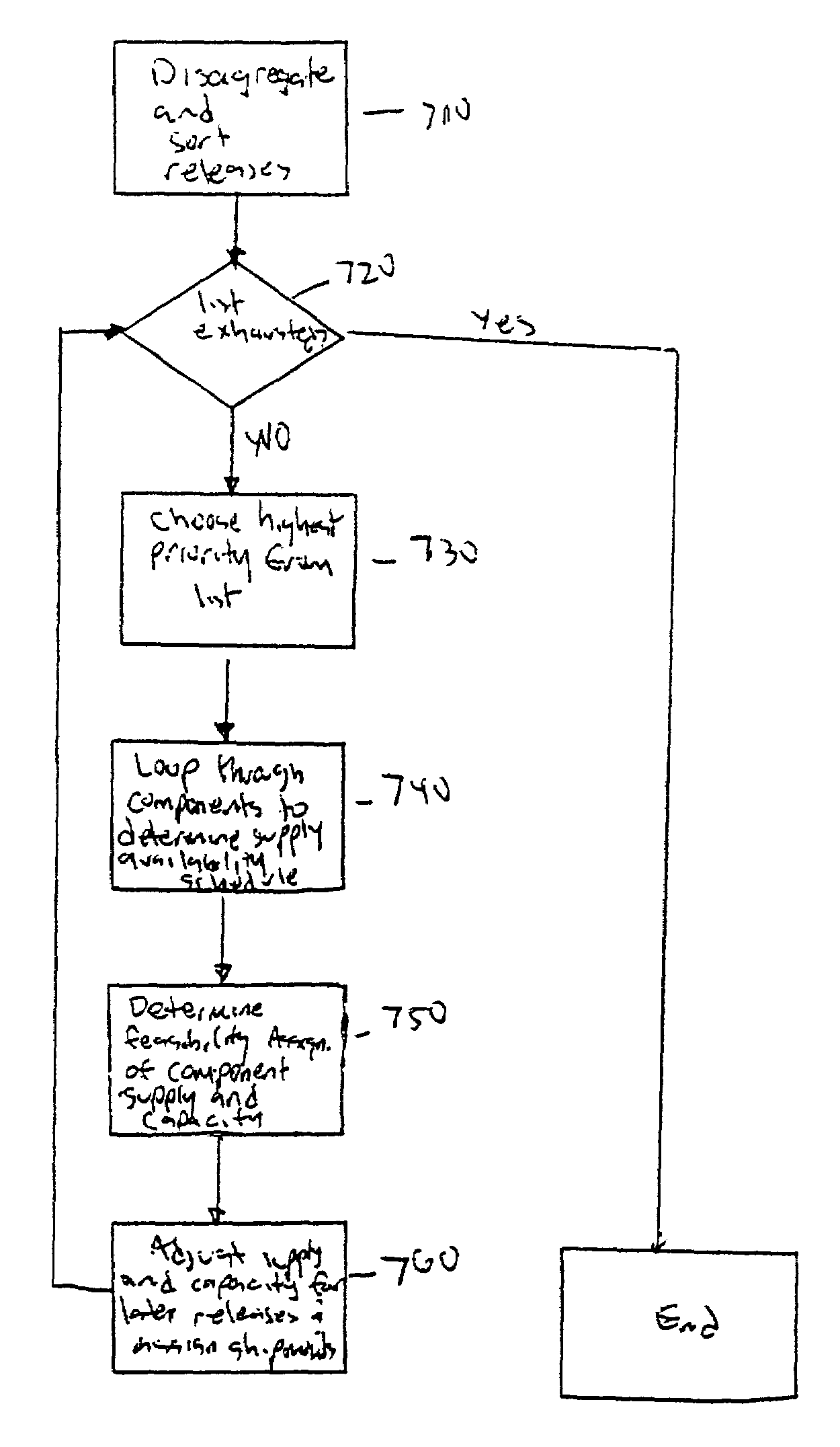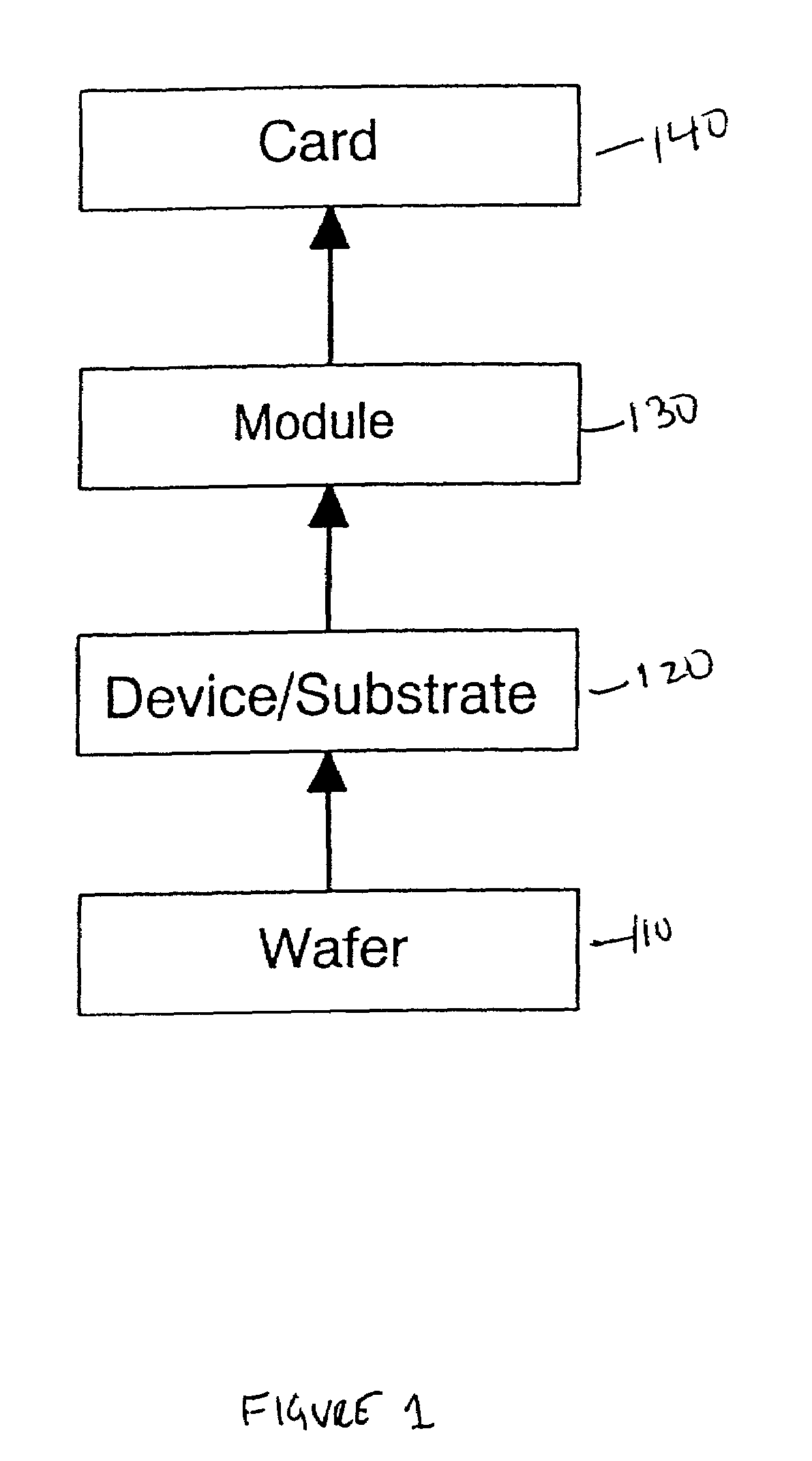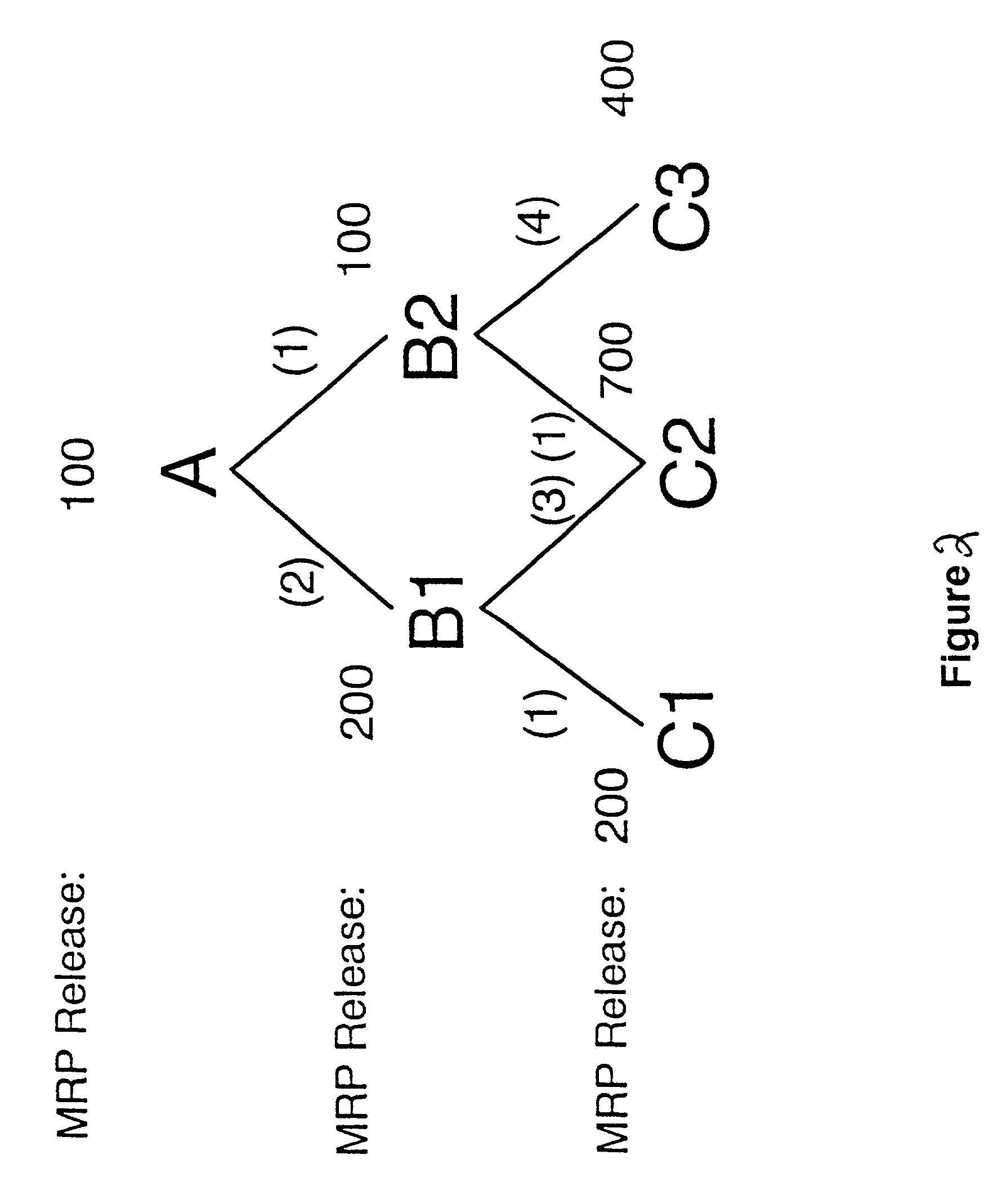Method for allocating limited component supply and capacity to optimize production scheduling
a technology of limited component supply and optimization, applied in multi-programming arrangements, instruments, data processing applications, etc., can solve the problems of significant impact on the flow of materials through the manufacturing system, matching demand and assets, and complex and refined semiconductor manufacturing processes
- Summary
- Abstract
- Description
- Claims
- Application Information
AI Technical Summary
Benefits of technology
Problems solved by technology
Method used
Image
Examples
Embodiment Construction
[0045]The present invention is directed to a computer implemented decision support system which serves as a solver to determine an appropriate match between existing assets and demands. This allows for the most efficient planning and manufacturing of items such as, for example, semiconductors and the like. To accomplish this task, in embodiments, the present invention maximizes the match between assets and demands at certain specified levels of the Bill of Materials (BOM). This is based on the understanding that the plan for matching assets and demands is in the form of a production schedule of material releases at all levels of the BOM. By way of example, the present invention is capable of determining efficient allocation of capacity and component supply to determine material releases of modules (assemblies) that are consistent with specific rules for rationing scarce supply of devices and substrates (e.g., components), as well as production or assembly capacity. To accomplish the...
PUM
 Login to View More
Login to View More Abstract
Description
Claims
Application Information
 Login to View More
Login to View More - R&D
- Intellectual Property
- Life Sciences
- Materials
- Tech Scout
- Unparalleled Data Quality
- Higher Quality Content
- 60% Fewer Hallucinations
Browse by: Latest US Patents, China's latest patents, Technical Efficacy Thesaurus, Application Domain, Technology Topic, Popular Technical Reports.
© 2025 PatSnap. All rights reserved.Legal|Privacy policy|Modern Slavery Act Transparency Statement|Sitemap|About US| Contact US: help@patsnap.com



